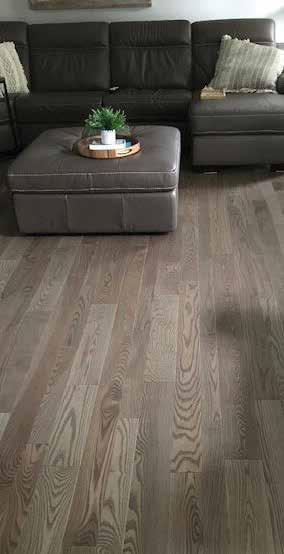EXPANDING HORIZONS WITH



Join
Check out and post “What’s New”. Be Inspired, find opportunities, upcoming events & more
& join 200+ RWH Topic Communities. Power Search centralized local & global knowledge & resources


Your way from thought leaders and experts (curated articles, online webcasts, courses, live events

With your best matched, screened providers and organizations, plus like-minded members
With top doctors & experts in live video Q&A. Plus get members-only discounts on their programs
FREE
Access to a vast growing catalog of courses. Plus, curate your own library to track your progress
On top provider and expert services, healing programs, training, courses & products
Top In-Hub thought leaders and missionaligned partner communities with exclusive benefits




Scientists have discovered a natural way to kill germs fast. Now thousands of people are using it against viruses and bacteria that cause illness.
Colds, flu, and many other illnesses start when viruses get in your nose and multiply. If you don’t stop them early, they spread and cause misery.
Hundreds of studies confirm copper kills germs like viruses, bacteria, and fungus almost instantly, just by touch.
That’s why ancient Greeks and Egyptians used copper to purify water and heal wounds. They didn’t know about germs. Now we do.
The National Institutes of Health and the American Society for Microbiology vouch for the power of copper to kill germs.
Scientists say copper’s high conductance disrupts the electrical balance in a germ cell and destroys it in seconds.

The EPA recommends hospitals use copper for touch surfaces such as faucets and doorknobs. This cuts the spread of MRSA and other illnesses by over half, and saves lives.
The strong scientific evidence gave inventor Doug Cornell an idea. He
made a smooth copper probe with a tip to fit in the bottom of the nostril where viruses collect.
When he felt a tickle in his nose like a cold about to start, he rubbed the copper gently in his nose for 60 seconds.
“It worked!” he exclaimed. “The cold never happened.” That was 2012.
Now he’s gone 11 years without a cold. “I used to get 2-3 bad colds every year. Now I use my CopperZap right away at any sign I am about to get sick.”
After the initial success, he asked relatives and friends to try it.
Users say:
“It works! I love it!”
“I can’t believe how good my nose feels.”
“Is it supposed to work that fast?”
“One of the best presents ever.”
“Sixteen flights, not a sniffle!”
“Cold sores gone!”
“It saved me last holidays. The kids all got sick, but not me.”
“I am shocked! My sinus cleared, no more headache, no more congestion.”
“Best sleep I’ve had in years!”
They all said it worked, so he patented CopperZap® and put it on the market.
Soon hundreds of people had tried it. 99% said copper worked if they used it right away at the first sign of bad germs, like a tickle in the nose or a scratchy throat.
Soon people found other things they could use it against:
Colds and Flu
Covid
Sinus trouble from germs
Cold sores or fever blisters
Canker sores that get infected
Mold allergies
Congestion or stuffiness
Drippy nose
Hay fever worsened by bacteria
Strep throat
Pink Eye and Styes
Skin infections
Infected sores
Cuts or wounds getting infected
Thrush and Tongue Infections
Warts
Ringworm
The handle is curved and textured to increase contact with fingers and hands in case you touch things sick people may have touched.

Scientists placed millions of viruses on copper. “The viruses started to die literally as soon as they touched it,” said Dr. Bill Keevil.
The EPA says copper works just as well when tarnished. Easy to clean or polish.
Made in America entirely of pure US copper. Comes with Directions. 90-day Money-back Guarantee. Price $79.95. Get $10 off each with code NATA36 .
See www.CopperZap.com or call toll-free 888-411-6114.
Buy once, use forever.
Statements not evaluated by the FDA. Not claimed to diagnose, treat, cure, or prevent any disease.






Publishers John & Trina Voell III

Assistant to the Publishers Carolyn Coogan
Design & Production John & Trina Voell III
Editor Martin Miron
Proofreader Randy Kambic
Calendar Theresa Archer
Sales & Marketing John & Trina Voell III

Distribution Kathy Matteo John & Trina Voell III
Website Design Locable
Website & Social Media SherTech
734-757-7929
Publisher@HealthyLivingMichigan.com HealthyLivingMichigan.com
P.O. Box 2717, Ann Arbor, MI 48106
NATIONAL TEAM
CEO Kimberly B. Whittle
National Editor Sandra Yeyati
Editor Brooke Goode
Copy Editor/Proofreader
Design & Production
National Advertising

Melanie Rankin
Gabrielle W-Perillo
Lisa Doyle-Mitchell
Natural Awakenings Publishing Corporation
350 Main Street, Suite 9B Bedminster, NJ 07921
Ph: 239-206-2000
NaturalAwakenings@KnoWEwell.com
© 2023 by Natural Awakenings. All rights reserved. Although some parts of this publication may be reproduced and reprinted, we require that prior permission be obtained in writing.
Natural Awakenings is a free publication distributed locally and is supported by our advertisers. Please call to find a location near you or if you would like copies placed at your business.
We do not necessarily endorse the views expressed in the articles and advertisements, nor are we responsible for the products and services advertised. Check with a healthcare professional regarding the appropriate use of any treatment.
Natural Awakenings is printed on recycled newsprint with soy-based ink.

The kids are headed back to school, and because we all get ready to hit the mental reset button, our August issue is here to help—chock-full of great ideas to support a shift in perspective, open us more to life’s mysteries and encourage us to recognize that not everything needs to be explained or understood fully. Let’s embrace the uncertainty and marvel in the inexplicable. Allow your imagination to wander into the realm of possibilities and see where it leads you.
If you need a little nudge, this month’s Inspiration department, “Walking in Wonder,” encourages us to reconnect with a childlike sense of awe and curiosity. As adults, it’s easy to become so consumed with the demands of everyday life that we forget how soul-fulfilling and awe-inspiring it is to literally stop and smell the roses. Marlaina Donato’s list of suggestions is well-matched with this month’s theme of lifelong learning because we really must rekindle wonderment to experience true enrichment. Exploring the thrill and magic of life and all that we can learn on a daily basis is even better when shared with kindred souls.
Lifelong learning is a philosophy and approach to education that emphasizes continuous renewal and personal development at every age. In our main feature, “Lifelong Learning: Benefits of Being the Forever Student,” we discover that learning does not need to be confined to the classroom, but can take place in different contexts at any stage of life. Lifelong learners are generally curious, self-motivated and passionate individuals. Their continued scholarly pursuits have also been shown to lead to mental and emotional benefits including a healthier, more fulfilling life. It’s true that the ongoing pursuit of knowledge, passion and purpose will keep you motivated, inspired and connected to your authentic self.
The here and now is always an opportunity to envision what you’d like to accomplish in the next chapter of your life, so take a moment to reflect on your achievements and experiences thus far and gather up new goals for the future. Is lifelong learning in the plan? The first step may involve rekindling a sense of wonderment and reconnecting with that which inspires you. Consider subjects, experiences and environments that resonate, and make a conscious effort to incorporate the awe and curiosity they instill into your daily life.
Speaking of the next chapter, I am turning 60 this month! As I take stock of the meaningful moments and experiences that have shaped my life, it seems incredible that so much time has passed by. I know I have so much to be grateful for: the good, the bad and everything in-between that has brought me to where I am now. I am excited to embrace the start of this new decade filled with hope for new adventures and possibilities, armed with plenty of wisdom to “just go with it.” God is good!
As always, we urge you to make your best effort to step outside each day, observe the season’s natural progression; look for monarchs and other butterflies; dance in the rain if you’d like; and savor the blessings of late summer. Carve out time each day to reflect on the things you are grateful for. Appreciating the small joys and blessings in your life can help you see the magnificence of everyday moments. Plus, mindfully staying aware of and magnifying the positive enables us to make the most of each day, whatever changes come our way.
Here’s to focusing on what really matters!
Natural Awakenings is your guide to a healthier, more balanced life. In each issue you’ll find cutting-edge information on natural health, nutrition, fitness, personal growth, green living, creative expression and the products and services that support a healthy lifestyle.
14
WALKING IN WONDER

Letting
Nature
&
To advertise with Natural Awakenings, please contact us at 734-757-7929 or email Publisher@HealthyLiving Michigan.com. Deadline for ads: the 12th of the month.

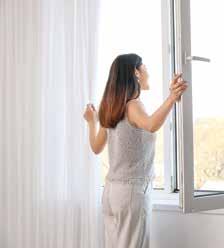
EDITORIAL SUBMISSIONS
Email articles, news items and ideas to: Publisher@ HealthyLivingMichigan.com Deadline for editorial: the 12th of the month.
CALENDAR SUBMISSIONS
Submit Calendar Events at: HealthyLivingMichigan.com.
Deadline for calendar: the 12th of the month.
REGIONAL MARKETS
Advertise your products or services in multiple markets!
AND SENSITIVITIES Back-to-School Tips for All Ages


28
Rise
11 17
ADVERTISING Contents
Currie, owner of Optimize You: Massage Therapy & Lifestyle Coaching, says, “Teachers are an important part of our community, and they deserve to not have to make the difficult choice between their career or their health. With burnout rates at an all-time high, COVID-19 put this already vulnerable group in an even more precarious position.” After working with Currie, clients report having more energy, less tension, better boundaries, more clarity around decisions and more ease and flow in everyday life.
Burnout symptoms may not be obvious until they are severe. They include exhaustion, muscle tension and aches, irritability, trouble with sleep and apathy, and teachers of all stripes are leaving the profession in overwhelming numbers. “It is not only very sad, but it will have profound negative effects on the school districts and children throughout the entire country,” advises Currie. “When a person is pushed beyond their limits for too long, it takes its toll on every single aspect of their lives.” She is able to help teachers take back their careers and physical well-being.

Location: 13105 Schavey Rd., Ste. 6, DeWitt. For more information, call xxx, email CandiceMCurrie@gmail.com or visit OptimizeYou Mi.com. See ad page 12.
Cherry Blossom Natural Wellness, the office of Dr. Janelle Mackowiak, uses a combination of naturopathic and functional medicine to encourage total wellness and longterm health. They treat digestive conditions, skin conditions, autoimmune disease, heart and brain health, chronic pain and illness, hormonal imbalance and more.
Mackowiak is a graduate of the National University of Health Sciences, a CNME-approved doctor of naturopathic medicine and a certified functional medicine practitioner. She states, “If you have a range of chronic, daily symptoms that conventional medicine has failed to alleviate, or been to specialist after specialist and they are constantly referring you to other doctors after telling you your diagnostic test results are normal, or if you’re tired of not having the answers, then give us a call! We put in the time to get to know you and look at the interactions between you and your environment, your lifestyle
and dietary choices, your genetics, and work to discover the synergy between your body systems.”
Free consultation. Location: 1020 E. Saginaw St., Lansing (also Oxford, Lapeer and Utica). For appointments and more information, call 248-274-6516, email DrJanelleMackowiak@gmail.com or visit CherryBlossomNaturalWellness.com.

Thethird annual Eastside Summer Fest, put on by the Lansing Eastside Neighborhood Organization and KCS Angels, Inc., is a family-friendly celebration of community and local businesses from 11 a.m. to 10 p.m., August 26, in the Frandor Sears parking lot.

Highlights include two stages of live entertainment, activities for kids, a car show, food trucks, vendors and more. Acts include The Habibi Dancers, DJ Booters, Tom & Mary, LVRS, The Further Adventures of FatBoy and JiveTurkey, Ensurance Trap, Kwaj and Suburban Ants.
Admission is free. Location: 3131 E. Michigan Ave., Lansing. For more information, visit Tinyurl.com/Eastside-SummerFest.
The Michigan Farmers Market Association (MIFMA) Farmers Markets at the Capitol provides a marketplace to showcase Michigan food and agricultural products from 9 a.m. to 2 p.m., August 15 through September 19, in an effort to educate state officials about the importance of supporting farmers, agriculture-based businesses and farmers markets.
Featuring local floral bouquets, vine-ripened produce, jams, jellies, baked goods, honey, maple syrup, meat, salsas, dips, pickled products, soaps and more, patrons can take advantage of food trucks parked along Capitol Avenue, as well.
The market accepts Supplemental Nutritional Assistance Program bridge cards, Double Up Food Bucks, WIC Project FRESH and Senior Market FRESH. MIFMA is committed to ensuring that all Michigan residents have access to the fresh, local fruits, vegetables and other food products sold at the market.
Location: 100 N. Capitol Ave., Lansing. For more information, call 517-432-3381 or visit Facebook.com/MIFarmersMarkets/events.





The Ourspace (517) Health and Wellness Weekend on August 17, 18 and 19 works to increase access to resources, information, opportunities and services in the areas of health, wellness and finance.
August 17: The Psychology of Money seminar and mixer at 6:30 p.m. at the Lansing Public Media Center. This event will feature a special panel discussion followed by a keynote address by Dr. Karlin J. Tichenor.
August 18: Holistic Wellness workshop at 6:30 p.m. at One Love Global with a free yoga session led by Ciara Hines and Dymon Wilson. Mats will be provided.
August 19: Harmony of Health conference from 9 a.m. to 1 p.m. in Logan Square with panel discussions, keynote addresses and breakout sessions. Logan Square Block Party from 4 to 9 p.m.
Admission is free. Locations: Lansing Public Media Center - 2500 S. Washington Ave., Lansing; One Love Global, Inc. - 3525 S. Martin Luther King Jr. Blvd., Ste. B, Lansing; Logan Sq. - 3222 S. Martin Luther King Jr. Blvd., Lansing. For more information, email Info@ Ourspace517.com or visit Ourspace517.com.
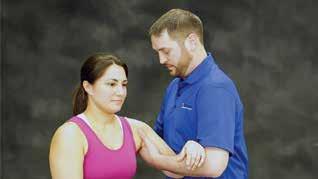
AtPremier Rehabilitation physical therapy clinic, orthopedic manual physical therapy (OMPT) is an advanced special ization of orthopedic pathology that takes physical therapy to the next level.
Owners and physical therapists Jeffrey Cook and Tyler Wilson agree that the additional two years of training required to specialize in OMPT allows practitioners to focus on evaluating and correctly diagnosing orthopedic issues. Because of this, they are able to create evidence-based treatment plans that get to the heart of the problem and allow true healing to take place.
OMPT treatment is all about correctly and consistently evaluating patients, which tells what therapeutic actions are most likely
Dr. Chi will be hosting a free seminar on Fingernail and Tongue Analysis from 6 to 8 p.m. on September 12, at the Wycoff Wellness Center during his only visit to Michigan this year. Individual clinic appointments are available from 9 a.m. to 5 p.m., September 11 through 13 and 9 to 11 a.m., September 14.
Chi is a world-renowned expert in the Eastern medical art of fingernail and tongue evaluation. He travels the globe teaching clinicians and evaluating patients with many medical conditions. As the published author of two excellent books on the topic, Chi is clearly a person able to fully evaluate fingernail and tongue changes.
Appointments are $40. Location: 1226 Michigan Ave., East Lansing. To register, call 517-333-7270. For more information, call 800-471-0255. See Dr. Wycoff's ad on page 3.


OrthoGold 100 is an exciting, breakthrough option in the field of regenerative medicine. It is a non-invasive treatment that utilizes shockwaves to rapidly reduce chronic pain and greatly accelerated recovery with sustaining results.
•
• Back Pain
• Elbow Pain
• Arthritis
• And More!

to prove effective. Multiple examinations along a patient’s journey to healing are a key factor in successful OMPT treatment. By doing this, patients can restore movement, reduce or eliminate symptoms and correct an area experiencing pathological dysfunction.


Location: 2380 Cedar St., Ste. 203, Holt (also Grand Ledge, Howell and Frandor). For appointments and more information, call 517-709-4677, email Reception@PremierRehabpt.com or visit PremierRehabpt.com.
The Farmers Advocating for Organic (FAFO) has awarded the Michigan State University (MSU) Student Organic Farm a $50,000 grant from the Organic Valley cooperative. The largest farmer-funded grant program in the U.S. and one of the few focused solely on organic provides a way to address long-term needs of the organic marketplace and the future of organic agriculture. The MSU Student Organic Farm is housed in the Culinary Division of Student Life and Engagement.
The grant will support and educate the next generation of organic farmers and consumers and MSU undergraduates that have been historically underserved and underrepresented by agricultural institutions. Workshops include information on regenerative agriculture, cooking with native plants, permaculture and more.


For more information, visit OrganicFarm.msu.edu and OrganicValley.coop.
The Urban Cup is celebrating five years in Lansing, The sister to The Soup Spoon on Michigan Avenue is owned by Robert Flanders, Nick Gavrilides and Scott Abramouski. They stock workout beverages focused on hydration and artisanal offerings. Located in the same parking lot as Westlund’s Apple Market, their handcrafted coffee uses freshly roasted beans. Other specialties are soups, sandwiches, ice cream and more.
To accommodate dark roast drinkers, the Urban Cup uses a handpulled lever espresso machine. Flanders says, “It operates using a piston with springs. It is much more artisan, providing a greater degree of control for the operator.”
Location: 2225 E. Grand River, Lansing. For more information, call 517-574-5617 or visit SoupSpoonCafe.com/the-urban-cup.

According to the U.S. Environmental Protection Agency, indoor air pollution can be as high as, or even higher than, outdoor levels. Because we spend about 90 percent of our time indoors, ambient air quality can impact anyone’s health, but seniors, children and people with health conditions like asthma and heart disease are more vulnerable.
Some pollutants come from outside; others originate indoors through cooking, cleaning, smoking, building materials, consumer products and furnishings. Common contaminants include formaldehyde, mold and pollen. Consider these measures to maintain a healthy, fresh-air environment inside the dwelling.
Open non-street-facing windows for 15 minutes every day to let fresh air in. Even if it’s colder or hotter outdoors, indoor air quality will improve, and the temperature will adjust quickly. The best times to ventilate are before 10 a.m. and after 9 p.m., when outdoor pollution is lowest.

Air quality alerts for particulates from forest fires or heavy smog may indicate skipping ventilation. To expel pollutants,
use bathroom and kitchen exhaust fans, or position a fan to blow out of a window. Ventilate rooms when painting or engaging in maintenance and hobbies that use noxious chemicals.
High-efficiency particulate air (HEPA) filters fitted into heating, ventilation and air-conditioning systems remove pollutants throughout the house, including dust, pollen, mold and bacteria. Portable air cleaners known as HEPA air purifiers can sanitize a single room or area. For more information, visit Tinyurl.com/EPAindoorair.
To reduce airborne, allergy-causing agents, including dust mites, pollen, animal dander and dust (comprised of dead skin, soil, fungal spores and chemicals), houseclean regularly. Use a vacuum with HEPA filtration and strong suction. Wet-wipe and wet-mop surfaces with reusable, compostable materials like washable cotton, hemp or wool. Avoid petroleum-based microfiber, which releases microplastics. Mops with bamboo or metal handles are more eco-friendly and longer lasting than plastic types.
Remove shoes at the door to prevent tracking in pesticides from green spaces and infectious bacteria from public restrooms, healthcare buildings or foodservice facilities. Replace chemical-ridden air fresheners, body perfumes and bug sprays with low-toxicity, DIY or commercial products that use essential oils and plant-based ingredients. Choose cleaning products certified or recommended by Green Seal (GreenSeal.org), EcoLogo (EcoLogo.org) or the EWG Guide to Healthy Cleaning (Tinyurl.com/EWGclean).
Make sure new furnishings and remodeling materials don’t contain lead, asbestos, flame retardants, volatile organic compounds or perfluorinated chemicals. Choose Forest Stewardship Council-certified wood furniture and Global Organic Textile Standard-certified textiles. For more tips, visit Tinyurl.com/EWGhomeguide.
Research indicates that lutein is essential for eye health, suppresses inflammation and offers cardiovascular health benefits. Because the human body cannot make this powerful antioxidant, it is important to include it in the diet by eating dark, leafy vegetables, such as spinach and kale.
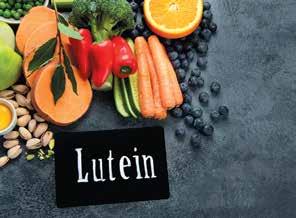
A new study in the journal Nutrients has found that coconut milk is the most effective plant-based milk to liberate lutein from spinach in green smoothies. The scientists from Linköping University, in Sweden, tested 14 liquids, and only four increased lutein liberation in spinach smoothies. Compared to blending spinach with water alone, coconut milk without additives was found to improve lutein liberation by 42 percent. Improved lutein liberation was also found with high-fat cow’s milk (36 percent), medium-fat cow’s milk (30 percent) and coconut milk with additives (25 percent). Researchers noted that soy milk with and without additives actually reduced lutein liberation by 40 percent and 61 percent, respectively.

One in six pregnancies ends in miscarriage. While there are many known causes, including chromosomal problems and infections in the womb, nearly half of pregnancy losses remain unexplained.

Researchers at the University of Birmingham, in the UK, analyzed 20 studies that examined the eating habits of 63,838 healthy women of childbearing age in the months

before and shortly after conception to see whether there was evidence of an association with a lower or higher chance of miscarriage. The review, published in the journal Fertility and Sterility, found that, compared to low consumption, high intake of fruit was associated with a 61 percent reduction in miscarriage risk, and high vegetable intake was associated with a 41 percent reduction.
Risk reduction was also linked to dairy products (37 percent), grains (33 percent), seafood (19 percent) and eggs (19 percent). The evidence was uncertain for red meat, white meat, fat and oil, and sugar substitutes. The researchers looked at whether specific types of diets (such as the Mediterranean Diet or Fertility Diet) were also linked to miscarriage risk, but they could not find evidence that following any of these diets lowered or raised risk.



A new study in the journal PAIN Reports conducted by researchers at University Hospitals Connor Whole Health, in Cleveland, looked at patient outcomes in pain reduction after music therapy. The study examined music therapy interventions provided to 1,056 adults that reported moderate to severe pre-session pain, anxiety or stress. Interventions included listening to live, music-assisted relaxation and imagery, and active music making. After a single music therapy ses-

sion, the patients reported clinically significant reductions in pain, anxiety and stress.

Additionally, patients receiving a music therapy session in which pain management was a goal were 4.32 times more likely to report pain reduction than those receiving the therapy without such a goal. While music therapy may be an effective, non-drug therapy for acute pain and distress management, additional research is needed to determine which characteristics of music therapy interven tions influence pain improvements.

Colon cancer is on the rise in young adults, according to a report published in the journal Science.Colorectal cancer diagnosed in individuals under the age of 50 is known as early-onset colorectal cancer (EOCRC). The most common symptoms include abdominal pain and rectal bleeding. Patients with EOCRC are often diagnosed with more advanced-stage disease and have worse survival rates compared to a later onset of the disease. EOCRC has risen at a rate of 2 to 4 percent per year since the 1990s and is anticipated to become the leading cause of cancer death in those aged 20 to 49 by the year 2030. One in five colorectal cancer (CRC) cases diagnosed today are in people younger than 55, compared to one in 10 cases in 1995, according to the American Cancer Society. The increased risk is carried through generations due to changes in environmental risk factors that disproportionately affect those born in recent decades compared to those born earlier. Obesity and other conditions related to metabolic syndrome, such as hypertension, hyperlipidemia, hyperglycemia and Type 2 diabetes are associated with CRC risk. Dietary factors, such as sugar-sweetened beverages, red and processed meat, and Western diets, have also been implicated, as has the increased use of antibiotics, environmental toxins and higher rates of cesarean sections and other surgical procedures. Other possible reasons include genetics, low screening rates and misdiagnoses. Researchers also call for more research on the microbiome for EOCRC early detection and assessment.
General Come hear the Patriot StreetFighter, Scott McKay under the big top at our Patriotic Organic Ranch in Mt. Pleasant!


Space is limited! Get your tickets at elmastery.org
Meet the inventor of the Energy Enhancement System. Dr Michael will be on-site and speaking about the EE System and its history in these intimate, educational sessions. Learn more at elmastery.org

It’s never too late to take an evening drawing class at the local high school, learn a language with the help of an app or get one-on-one tutoring from a piano instructor. Adults of any age can find personal and professional benefits when they engage in what is termed “lifelong learning”. It is a great way to spice up retirement, acquire skills for a coveted promotion, master new technology, express creativity or simply keep the mind sharp.
Lifelong learners are generally curious, self-motivated and passionate individuals. Their continuing educational pursuits can lead to mental and emotional benefits, including healthier, more fulfilling lives.

In a study published in the journal Psychological Science involving 200 seniors, neuroscientists at the Center for Vital Longevity at The University of Texas at Dallas found that sustained engagement in cognitively demanding, novel activities— such as learning digital photography or quilting—significantly enhanced memory function in older adults. The researchers were surprised to discover that the control group, which engaged in fun, social activities without learning a new skill, did not perform as well in memory tests.
In a report published in the journal Neurology, Dr. Keith Johnson from Massachusetts General Hospital and Harvard Medical School found that people engaged in higher levels of intellectual stimulation throughout their lives can delay the onset of memory problems and other symptoms of Alzheimer’s disease, although it does not represent a cure for the illness.
The mind is a use-it-or-lose-it tool, says Dr. Lise Van Susteren, a general and forensic psychiatrist in Washington, D.C. “What better way to use our short-term and long-term memory than to engage in lifelong learning? The older we get, the less likely we are to exercise short-term memory. We program our phones with numbers we call regularly. We store passwords and usernames in our computers and never attempt to memorize credit card numbers,” she explains. “We’re not using our brains enough, leaving us open to being replaced by AI [artificial intelligence]. The brain is a muscle to be exercised regularly or like a car that you must keep tuned up.”
Susteren points to a five-year study of London taxi drivers, which found that the hippocampus, a part of the brain that is crucial for long-term memory and spatial navigation, was larger than average in the brains of these cabbies. What’s more, the neuroscientists at University College London were able to show through magnetic resonance imaging that this gray-matter growth occurred over a four-year period after the drivers had memorized an intricate
network of 25,000 streets and thousands of routes to tourist attractions and city hotspots. According to Van Susteren, this study suggests that intensive learning can spur the brain to grow over time.
Ingrid Bianca Byerly, director of the Humanitarian Challenges Focus Program and senior lecturing fellow in the Thomp-
everything,” she says of her experience with her Irish-based mentor. “I had the space in my life and money from selling my house. Three months turned into nearly a year, and upon returning home, I continued studying for four more years.”
son Writing Program, at Duke University, describes lifelong learners as audacious, curious and fun-loving people that passionately seize the day. In a TEDxStGeorge talk entitled “The New Fountain of Youth: Lifelong Learning”, she recounts the invigorating experience of being on the faculty of three Semester at Sea voyages, where she taught undergraduate students and lifelong learners world music and public-speaking advocacy for global humanitarian causes.
“Entering college, you’re asking yourself, ‘What am I going to do for a job and a paycheck?’ and at retirement, you’re asking, ‘What is my purpose, and what am I going to do with the rest of my life for my personal fulfillment and enrichment?’” Byerly expresses admiration for lifelong learners that pursue life goals, learn to play musical instruments, take art classes, climb mountains or write memoirs, and surmises that the secret to staying young and keeping the mind alive is adult education.
For some lifelong learners, seeking new opportunities and embracing change are compelling motivators. Take Maia Toll, for example. In 2006, she followed a whim to study herbalism with a traditional healer in Ireland. For the elementary school teacher living in Beacon, New York, botanical herbs had only been a hobby up to that point.
“Apprenticing with Eleanor changed
Toll left her teaching career to become a full-time herbalist and is now the co-owner of a shop called Herbiary, with locations in Philadelphia, Pennsylvania, and Asheville, North Carolina, where she lives. She has taught herbalism at West Chester University in their School of Public Health, led a study program in the Amazon rainforest and written several books, including her latest, Letting Magic In. As she explains, “Lifelong learning can change your life at any age.”
For 30 years, Jim Walker was a labor representative for the California School Employees Association. He recalls teaching a labor-law class as an adjunct instructor for Los Angeles Trade-Technical College and estimates that about 80 percent of his students were lifelong learners, which he defines as adults between the ages of 30 and 45 that are interested in the subject matter for personal or professional reasons rather than satisfying a requirement for a college degree.
“It was obvious to me that these lifelong learners were more dedicated students than college students. They were like sponges and wanted to absorb everything. Occasionally during classes, it was the lifelong learners that were on their phones googling the subject and updating my facts,” says Walker, who admits that when he had more free time in retirement, he enrolled in meteorology and astrology courses to satisfy longstanding interests of his own.
In love with learning and the sense of accomplishment she feels whenever she masters a subject, Doreen DeStefano, of
A study of London taxi drivers suggests that intensive learning can spur the brain to grow over time.
Root Causes Holistic Health & Medicine, in Fort Myers, Florida, has been earning degrees since 1987. She holds bachelor’s degrees in nursing and exercise physiology, master’s degrees in criminology and public business administration, and doctorates in natural health and nursing practice. “In medicine, there is always something new to learn,” she says. “I think that’s why I chose this field. It’s fun to learn the latest thing.”
There are numerous opportunities for learning, in person and online.

n For people that work full time, many cities offer evening classes at high schools, colleges or civic centers on a wide range of subjects.

n Museums and art institutions commonly host demonstrations and in-depth instruction by local artists.
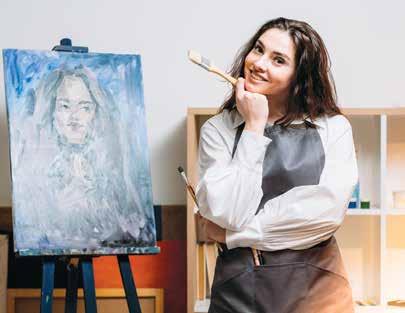
n A neighborhood music store can lead to connections with musicians that tutor burgeoning rock stars.
n For those harboring thespian aspirations, a hometown improv group or regional theater may be holding auditions or offering acting classes.
n Dance studios help people step up their ballroom dance skills.
n Contact a chef or visit a kitchen supply store for cooking lessons.
n A nearby botanical garden or gardening shop may offer how-to classes for growing native or pollinator plants.
n Pick up sewing tips at the fabric store.
n If a class is not offered, create a study group that meets at a cafe or park to learn together.
n To become proficient in a new language, check out apps like RosettaStone.com and Duolingo.com.
n YouTube.com is an endless source for instructional videos of every variety.
n Visit Ted.com for informative and inspiring TED talks by global experts in their respective fields.
n For students that wish to learn while taking nature walks, a vast world of podcasts awaits.
n For transformational learning, try MindValley.com, UbiquityUniversity.org and Gaia.org.
n Coursera.org offers many streaming courses, documentaries and films.
n Auditing university classes at prestigious, world-class schools is just a click away. Visit these popular sites, many of which offer courses for free: Harvard University (pll.harvard.edu/catalog/ free), Stanford University (Online.Stanford.edu/free-courses), EdX (EdX.org) and The Open University (Open.edu).
 by Marlaina Donato
by Marlaina Donato
Before life snagged us in its insidious net of obligations, our child selves discovered awe around every bend. We poked our noses into fluffy, new dandelions and saw faces in passing clouds. “Why?” was a perpetual mantra we lived by, no doubt testing the patience of loved ones. Somewhere along the way, our eagerness to jump into the lap of the world and be held by magic gave way to a new way of being.
In 1942, Albert Einstein wrote to his old friend, German psychiatrist Otto Juliusburger, “People like you and I, though mortal of course like everyone else, do not grow old no matter how long we live. What I mean is we never cease to stand like curious children before the great Mystery into which we were born.” This quote reminds us to stop wading in the daily grind and dive into the deep end of everyday magic.
Discovering a new musical artist, learning about a country we never heard of and touching emerald moss during a Sunday hike wakes up the child in us, the self that is impervious to pessimism. Observing a flower at ground level with the bees or reacquainting ourselves with the changing wheel of constellations not only re-sparks our ability to respond to life but also reinforces our connection to the infinite.
Courting curiosity is the domain of cats, as well as the most contented humans. Rekindling our wonderment is even better when shared with kindred souls, and the ripple effect can travel further than we might expect. Here are some inspirations:
n Without a set plan, get in the car with a friend and see where the day takes you. Pack a picnic and stop for lunch somewhere off the beaten path.
n Regardless of artistic ability, begin a nature journal and record small bits of the seasons throughout the year.
n Check out a book or two from the children’s section at the library and be young again.
n Create a daily practice of daydreaming about something delightful that has nothing to do with the past or the future.
n Start a local meet-up with others that share a common passion: books, healthy baking, trains or thrifting.
n Revisit a childhood or teenage interest and don’t explain why.
Marlaina Donato is an author, painter and composer. Connect at JaguarFlower.art.
Florida
If you have arthritis, diabetes, kidney problem, fatty liver, psoriasis, Obesity, Low immune system, Anxiety
Our center is right place for you!
7•10•14 DAY ALL-INCLUSIVE HOLISTIC PACKAGES

Holistic Package includes:

n Comfortable rooms near the ocean
n Low carb diet food (lunch, dinner)
n Oxygen cocktail, Green cocktail
n Yoga classes
n 4 treatments a day
n Transportation From airport
We work with each individual to find the right treatment. We are with you every step of the way as you improve your health!
Treatments we are offering:
• Ionic detox
• Lymph drainage
• Cupping massage
• Reflexology massage
• Hot stone massage
• Classical massage
• Infrared wrap with collagen and Dead Sea application
• Electromagnetic therapy
• Jade application
• Ultrasonic cavitation
• Lipo laser treatment
• Vitamin IV
• Much more
WellnessAndDetoxcCenter.com
Bestselling author, activist and gardener Maria Rodale is a board member of Rodale Institute, a nonprofit dedicated to growing the regenerative organic agriculture movement through research, farmer training and education. She is the former CEO of Rodale Inc., the global health and wellness media company that published notable books and magazines, including Al Gore’s An Inconvenient Truth. Her own books include Organic Manifesto: How Organic Food Can Heal Our Planet, Feed the World, and Keep Us Safe, as well as Scratch: Home Cooking for Everyone Made Simple, Fun, and Totally Delicious. In her latest work, Love, Nature, Magic: Shamanic Journeys into the Heart of My Garden, Rodale
leads readers through her relationship with the plants, animals and insects that inhabit her garden and shares the life lessons these often misunderstood creatures taught her.
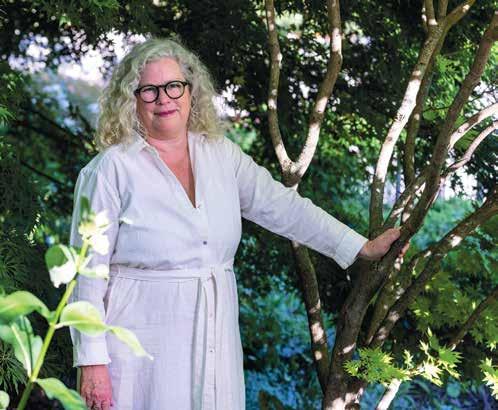
It was a combination of sensing that “spirit” wouldn’t allow me not to and the recognition that I could write the book in my own way, with humor and irreverence. It’s been my experience that once we begin following the path that spirit provides for us, things become easy. As someone on the older side of life, I’ve also noticed that when I don’t listen to that guidance, I tend to really mess things up, so even when I don’t understand the path, I have to follow it.
The overarching message, which has been reinforced since I wrote the book, is that nature wants to feel free to do whatever it needs to do to heal things. The more we try to control nature, the more frustrated it gets. The same is true for people; the freer we feel, the happier and more productive we are. All efforts to control, whether it’s controlling human behavior or landscapers trying to control the landscape, are not helpful in any way. If we want to solve the climate crisis or the environmental crisis, we need to allow nature to be free and do its job.
The other message I received from nature relates to humans’ tendency to search for plants, take them, hoard them, eat them and rub them on our skin. In reality, we don’t need to do these things to benefit from plants. We can simply be in harmony with them in order to absorb their healing energy. So again, it’s about freedom, releasing control and trusting our relationship with plants and nature.
Many of us are afraid of having new experiences or have anxiety about things we don’t understand. When this happens, we can choose to stay in the fear or encourage ourselves through it. When we choose courage and curiosity, we often learn a new skill or power. For example, when I was journeying and getting to know mosquitos and ticks, I felt afraid but chose to keep going. While I didn’t come to love the mosquitos and ticks, I developed compassion and respect for them.
To understand what nature is communicating to us, we need to get curious and unlearn what our parents and culture taught us about how our garden should look or how we should interact with it. We can ask ourselves, “What am I afraid of? Where did the fear come from?” and listen for the answer.

Trauma is the root of everything—crime,






abuse and all the things that make us unhappy and destructive, both towards each other and nature. That’s one of the reasons I was excited to share the parents’ creed in the milkweed chapter. The creed teaches that in order to stop trauma, we must raise kids well from the start. The challenge is that our culture doesn’t provide the information we need to minimize our mistakes or prevent trauma in the first place. Openness to learning about ourselves is key to healing trauma. When we heal our traumas, we are less likely to project trauma onto other living beings, including nature.
If people respond to life with curiosity instead of fear, and love instead of control, we can evolve amazingly fast and have fun doing it. This is the wonderful work we can accomplish together with nature— envisioning and building new systems and ways of being on this beautiful Earth.
Sophia Ellis Kreider is a freelance writer in Lancaster, PA, and a regular contributor to Natural Awakenings. Connect at Sophia EllisKreider@gmail.com.





















It’s back-to-school season, and for students with food issues, meal planning is as important as lining up classroom supplies and extracurricular schedules. Paramount in their minds is to avoid ingredients that might cause unappealing reactions or compromise health, while not stressing about the risks or feeling cheated that they cannot eat the same things as their friends.
Diagnosis. Often, food allergies, sensitivities and intolerances are incorrectly used interchangeably when, in fact, the symptoms, treatments and safety recommendations differ. Consult a physician for a proper diagnosis and a nutritionist for dietary guidance.
FOOD ALLERGIES cause an almost immediate, potentially deadly immune response (anaphylaxis) requiring an epinephrine shot. Symptoms include a drop in blood pressure, narrowing of the airways, rashes, nausea and vomiting. The U.S. Centers for Disease Control and Prevention (CDC) estimates that 20 percent of students with food allergies will have a reaction at school. Eight ingredients account for 90 percent of food allergies: milk, eggs, fish, shellfish, tree nuts, peanuts, wheat and soybeans.
FOOD INTOLERANCES result from an inability to digest certain foods due to an enzyme deficiency or irritable bowel syndrome. The most common forms of intolerance are caused by lactose, histamine and gluten.
FOOD SENSITIVITIES provoke delayed symptoms (sometimes days after eating a problematic ingredient), including diarrhea, rashes, joint pain, digestive problems, fatigue and brain fog. Among children, common triggers are lactose, gluten, grains, legumes, soy, corn and yeast.
Emotional Concerns. According to Karen Raden, an Illinois-based registered dietician and certified clinical nutritionist, the goal is what she calls “food freedom”: the empowerment of students to make informed choices that feel best for them and their bodies. “Even if a child’s options are limited, it’s important to allow them to make substitutions. The less restricted, the better. It’s not just about the science; there’s a lot of emotion that goes into it, too,” she says.
Dr. Dawn Huebner, a psychologist, author and parent coach in Sacramento, California, says, “There is danger associated with allergies, and anxiety results when you overestimate the danger. In children, this can morph into anxiety about eating with other people or touching things in the classroom. Many parents are intent on making uncomfortable feelings go

away, so they end up minimizing feelings, telling their children to simply not worry.”
A better approach, Huebner says, is to acknowledge the child’s reality and empathize with them. “Say to your child in a really direct way, ‘Yes, that’s hard to see your friends eating ice cream or cupcakes that you don’t get to have.’ Even though there are food substitutions, it doesn’t make up for the fact that a student doesn’t get to be a regular kid, eating what everyone else gets to eat.”
Huebner suggests that parents help their children develop skills to overcome temptation, rather than berating or punishing them for occasionally sneaking forbidden foods. At all times, delicious alternatives should be readily available.
Theresa Diulus, a Texas-based nutrition coach, believes in empowering kids by keeping ready-made foods in clearly marked bins that kids can easily access. She stocks the pantry with gluten-free oatmeal and coconut or cassava flour cake mixes, and stores frozen, gluten-free waffle or pancake batter in batches to save time when a safe and delicious treat is needed.

Substitutions . Replacing essential nutrients that might be missing once certain foods are eliminated is another key objective. “If dairy is the problem, for example, we worry about bone health and need to make sure the child is getting calcium from nondairy sources,” Raden explains. “I like to find out what their favorite foods are and modify them. Food issues are more prevalent these days. We’re really lucky now that there are very good substitutes for eggs, dairy and gluten.”
Raden recently adapted a shepherd’s pie recipe by using gluten-free flour and almond milk. For people that cannot tolerate regular eggs, she recommends using a “flax egg” in baked goods, which combines one tablespoon of flaxseed meal with three tablespoons of water.

When they were little, Caroline Somers’ two daughters developed extensive food intolerances and food allergies with inflammation, gastrointestinal bloating and digestive distress. Tasked with reimagining
her family’s diet, the president of Suzanne Somers Companies created new versions of her favorite recipes, which will be featured in her upcoming cookbook, Served: From My Family Table to Yours.
“Many people deal with family members who have food preferences or intolerances to foods, and it can turn the person preparing foods into a short-order cook—no gluten for this one; vegan for that one; this one will eat fish but no dairy. It can make your head spin,” says Somers. Her Vietnamese Spring Rolls recipe addresses this predicament by serving the ingredients family-style and inviting each person at the table to assemble their own spring roll according to their food preferences and restrictions.
Veronica Hinke is a food historian and author of The Last Night on the Titanic: Unsinkable Drinking, Dining and Style. Learn more at FoodStringer.com.

To accommodate a family with differing dietary needs due to food allergies, sensitivities or intolerances, this dish is served family-style, allowing diners to assemble their own spring rolls, choosing from the ingredients that fit their food restrictions.
YIELD: 24 SPRING ROLLS (6 ENTREE SERVINGS,
1 8-oz package of 8¾-inch rice spring roll wrappers (24 wrappers)
1 bunch Thai basil (or Italian basil), leaves only
1 bunch fresh mint, leaves only
1 bunch fresh cilantro, leaves only
3 cups coconut jade pearl rice (recipe below)
2 mangoes or papayas, pitted, peeled and sliced into long, thin strips
4 Persian cucumbers, julienned into long, thin strips
6 carrots, julienned into long, thin strips
¼ cup crispy ginger (recipe below)
1 head romaine lettuce, thinly sliced
1 head red leaf lettuce, thinly sliced
2 cups sesame ginger vinaigrette (recipe below)
1 cup peanut sauce (recipe below)
Sriracha to taste
COCONUT JADE PEARL RICE
1 15-oz bag (2¼ cups) Lotus Foods Jade
Pearl Rice (or jasmine rice)

1 14-oz can unsweetened coconut milk
1¼ cups water
Pinch of sea salt
Do not rinse the rice. Combine rice, coconut milk, water and salt in a pot and bring to a boil. Cover, reduce the heat to a simmer and cook for 20 minutes. Remove from the heat and let stand for 10 minutes. Fluff with a fork and serve. Can also be prepared in a rice cooker with the same ratios
CRISPY GINGER
1 palm-sized piece of fresh ginger
½ cup toasted sesame oil
Peel the ginger and thinly dice it. Heat the oil in a sauté pan over medium-high heat. Add the diced ginger and fry until golden brown—approximately 6 to 8 minutes—stirring frequently to brown evenly. Transfer the crispy ginger to a small serving bowl with a tiny spoon.
SESAME GINGER VINAIGRETTE
1 cup toasted sesame oil
¾ cup rice wine vinegar
¼ cup tamari (or soy sauce)
2 Tbsp grated fresh ginger
1 Tbsp dried hot mustard
Combine all the ingredients in a jar with fitted lid. Cover and shake until well combined. Store in the refrigerator for up to 2 months.
½ cup creamy peanut butter
1 Tbsp grated fresh ginger
2 cloves garlic, pressed
2 Tbsp palm sugar
2 Tbsp sweet chili sauce
1 lime, juiced
1 Tbsp rice wine vinegar
1 Tbsp tamari (or soy sauce)
1 Tbsp toasted sesame oil
2 to 3 Tbsp warm water
Heat the peanut butter in a medium bowl in the microwave for 20 to 30 seconds. Add the ginger, garlic, sugar, chili sauce, lime
juice, vinegar, tamari and sesame oil, and whisk to combine. Add the warm water to thin the sauce to desired consistency. Store in a covered jar in the refrigerator for up to 2 months.
To assemble a spring roll, dip one rice wrapper completely in a shallow bowl of warm water for about 5 seconds. Remove and spread flat on a plate or chopping board. Place basil leaves down the center. Continue to top the single strip with mint, cilantro, a thin layer of rice, mango, cucumber, carrot, a few pieces of crispy ginger and lettuce. Do not overstuff.
Fold up the bottom first, then fold over one side of the wrapper, tucking and rolling the filling into a compact cylinder, leaving the top end open. Serve the rolls with bowls of sesame ginger vinaigrette, peanut sauce and sriracha. Repeat to make desired number of rolls, using any combination of ingredients. Recipe and photo courtesy of Caroline Somers.
SURGEON-DESIGNED METAL ALLERGY TEST KIT




If a metal does this to your skin... what will it do implanted inside of your body?

Sensiband is an easy to use and affordable way to test for metal allergies before a surgical implant. www.sensiband.com
Each test kit comes with hypoallergenic silicone bands and interchangeable disks to test for potential allergic reactions caused by the most commonly used surgical metals.

 by Carrie Jackson
by Carrie Jackson
relations and facilitates new partnerships. Moreover, sustainability research and education demonstrate relevance in addressing grand challenges and help unify the campus around a shared sense of purpose.”
AASHE advocates comprehensive modifications that make going green easy and second nature. “We recommend that institutions create systems in which sustainability is the default. Long-term measures such as installing low-flow fixtures in bathrooms, using induction stovetops in dorms and having light sensors that turn off automatically in offices make saving energy automatic,” Dautremont explains. “Where individual behavior is a factor, make the more sustainable choices convenient by, for example, providing water bottle filling stations on every floor, installing covered bike parking and storage, or giving each room its own recycling receptacle and providing education and training to make sustainability behaviors the cultural norm.”
The halls of higher education are adopting more sustainable practices as students and university stakeholders increasingly understand that their lifestyle choices and daily operations impact the planet. Motivated by the climate crisis and global-warming-related disasters, many students are looking for ways to lower their individual carbon footprint. Schools, too, are implementing Earth-friendly initiatives throughout their campuses while also prioritizing climate-conscious subjects in their curriculums.
According to Julian Dautremont, director of programs at the Association for the Advancement of Sustainability in Higher Education (AASHE), “Sustainability education helps attract, retain and motivate top students and prepares them for responsible citizenship. It catalyzes increased giving and new funding sources, strengthens community
Sophomore Anna Ries-Roncalli, an environmental science major at Loyola University, in Chicago, says, “College is often the first time you’re learning how to be an adult and interacting with the world, and it’s important to make sure that your role is sustainable. Colleges have an inherent, built-in sense of community, and prioritizing sustainability comes more naturally when you see that it’s a collective responsibility that impacts others.”
Ries-Roncalli is aware of the impact her food choices have on the environment. “In our country, where we can buy anything we want from the grocery store, we are so disconnected from the food system. Most
people don’t see a carton of eggs and think about every step that it took to get it on the shelves or where the farm it came from is located,” she says. To do her part, she brings reusable plates and utensils to the dining hall, takes leftovers home in a multi-use canister and shops locally or at farmers markets whenever possible. While Loyola composts most food waste in the dining halls, Ries-Roncalli volunteers with Food Recovery Network, a student organization that collects and distributes leftovers to local shelters and food pantries.
Michael Hughey, a senior in the environmental studies program at Loyola, takes full advantage of a partnership between the Chicago Transit Authority and Loyola that grants eligible students unlimited use of public trains and buses. “Students can also walk, take their own bike or use a bike share to get around. Not only are they cutting back on their carbon footprint, they’re engaging more with the city on a ground level,” Hughey explains. “We’ve seen the effects of climate change disproportionately affect low-income communities and com-
munities of color. I personally want to mitigate those effects as much as possible and be kind to the planet and my neighbors.”

Cria Kay, program administrator at Northwestern University’s sustainNU, says, “I recommend finding something that brings you joy, identifying what changes you want to see in your life or community, then developing an action you can take that applies your passion to the environmental issue you identified. Even something as simple as taking a walk to pause and notice the wildlife, water, air and soil around you can be helpful for well-being and getting inspired to take on more sustainable behaviors.”
Amy Spark, the sustainability coordinator at Bow Valley College, in Calgary, Canada, believes that sustainability literacy eventually will be required across all disciplines. “Students in every sector are going to be impacted by climate change. Nurses in our LPN [licensed practical nursing] program are seeing a spike in hospital visits with health issues from increasingly poor air quality. It is important to train future graduates to recognize and deal with the
impacts of climate change in their disciplines,” she explains.





Spark encourages students to use their voices. “Human stories move decision-makers, and schools are invested in their students’ overall experience. You don’t need to be an expert, but speak from your experience,” she suggests. “Tell your administrators and policymakers how air quality affects you, or let them know how having more bike lanes would help. If you see something, say something. Report leaky faucets, lights that won’t turn off and other inefficiencies to the maintenance department so proper repairs can be made.”
“Individual behavior change is important, but the single most powerful thing students can do is to advocate for broader change,” says Dautremont. “Students can be enormously influential in campus decision-making, and the impact of such changes generally is going to far outweigh the impact of individual behavior changes.”
 by Sheila Julson
by Sheila Julson
Whether it’s a wedding day or job interview, nothing puts a damper on the moment like an outbreak of acne. It can be embarrassing and compromise self-confidence, but natural treatments and lifestyle modifications can keep those breakouts at bay.
According to the American Academy of Dermatology Association, acne is the most common skin condition in the U.S., affecting up to 50 million Americans annually and roughly 85 percent of 12- to 24-year-olds. Dr. Julie Greenberg, a naturopathic doctor and founder of the Center for Integrative & Naturopathic Dermatology, in Los Angeles, notes that the prevalence of acne in this country leads people to wrongly conclude that it is a normal part of being human.
“In fact, studies of indigenous cultures throughout the world do not find any acne in their populations. Acne is a disease of the Western lifestyle,” she asserts.
In essence, acne is an inflammatory skin condition that causes pimples, blackheads, whiteheads and redness. It is prompted by the overproduction of sebum, an oil produced by the sebaceous glands to lubricate hair follicles. Symptoms can be aggravated by an overgrowth of bacteria or yeast, excess hormonal activity or stress.


“The pathways that trigger acne are the same pathways that trigger inflammation. If you’re having acne on the skin, that generally means there are moderate to high levels of inflammation in the body, so that should be addressed,” says Saya Obayan, a board-certified integrative dermatologist at Skin Joy Dermatology, in Austin, Texas. She recommends keeping a food journal for six weeks to identify inflammatory foods that noticeably trigger an acne response and eliminating them from the diet. Many of the culprits are part of the Standard American Diet, including animal protein, wheat and sugar—foods that can increase sebum production, and thus generate acne.
Dr. Steven Daveluy, associate professor and program director for the Wayne State University School of Dermatology, in Dearborn, Michigan, notes that dairy spurs acne, as well. “Dairy contains an amino acid called leucine, which stimulates oil production and affects the skin cells to cause clogged pores. It also influences the insulin pathway, which can affect hor-

mones,” he explains.
According to the Cleveland Clinic, hormonal acne develops when hormonal changes increase the amount of oil the skin produces. This scenario is particularly noticeable in teens going through puberty and in both perimenopausal and menopausal women.
Greenberg approaches acne like she would any other inflammatory disease—by focusing on the gut microbiome. She recommends consuming at least 35 grams of fiber per day, eating a diverse array of fruits and vegetables, limiting meat consumption to four-ounce servings and eliminating or reducing alcohol, sugar and wheat to support microbiome health.
Obayan notes that stress aggravates any inflammatory disease, including acne. Meditation, exercise or regular walks can help calm the mind and lower stress. She also recommends herbs like ashwagandha to lower cortisol, a stress hormone that can trigger acne.


“The things we put on our skin can lead to clogged pores and trigger acne, including makeup and hair products. If you’re getting acne in places where your hair typically touches your face, it could be from a hair product transferring onto the skin,” Daveluy notes. He stresses that makeup should be washed off before bedtime. On the other
hand, over-scrubbing or washing the face too often can dry out the skin, which also leads to clogged pores and acne.
“While acne should be addressed from the inside out, topical antibiotics can offer short-term relief and keep severe acne under control,” Obayan says. “Glycolic acid can help keep skin smooth and clear by exfoliating dead skin cells and unclogging pores. Tea tree oil has antibacterial and antimicrobial properties, but it shouldn’t be used undiluted on the skin; it can be overly irritating.”
In addition, Obayan recommends topicals like retinol, a nontoxic vitamin A derivative that can help reduce acne, hyperpigmentation, dark spots, scarring, fine lines and wrinkles. Bakuchiol, an extract from the babchi plant, along with topical green tea polyphenols, licorice extract and neem oil, can all be helpful to reduce acne.
Mom was right when she warned to leave pimples alone. “People often think that it’s helpful to manipulate your acne, but it can lead to more acne flaring, discoloration and even permanent scarring,” Daveluy advises. “Don’t believe anything on social media that isn’t posted by a board-certified dermatologist. The rest of the skin info on social media is junk and could lead to damage to your skin.”
There’s something meditative about observing the movement of colorful fish among swaying aquatic plants while hearing the soothing sounds of water. In our culture, where stress has run amok, the restorative ambiance created by a wellplaced and properly designed aquarium may be a welcome remedy for the busyness of life.
A study by the U.S. National Institutes of Health reports that aquariums help lower blood pressure, reduce the risk of cardiovascular disease, lessen feelings of loneliness and serve as emotional support during mental health crises. Gazing at fish for just a few minutes every day can reduce stress, improve sleep and instill an overall sense of calm.
People have kept fish for more than 4,500 years, and since the late 1800s, the idea of marine life as pets has emerged as a popular pastime. Large public aquariums
with multi-million-gallon exhibits thrill visitors around the globe, while smaller fish tanks adorn doctors’ offices, health spas, libraries and a myriad of public and professional spaces. With a little planning, the beauty and calming influence of these underwater displays can be incorporated into the home, offering a unique way to bring nature indoors, spark curiosity and teach kids valuable lessons.
Dr. Ran D. Anbar, a board-certified pediatric pulmonologist and pediatrician, has two aquariums in his waiting room in La Jolla, California. “Watching fish doesn’t require a lot of thought, and this allows the mind to settle down. It’s generally calming because the viewer’s interest is captured by the fishes’ unique appearances and smooth, rhythmic and repetitive navigation through water. Aquariums have been associated with improvement of mood, better pain management and blood sugar control,”
says Anbar, who also offers hypnosis and counseling services to his patients.
If a child shows interest, Anbar incorporates the aquarium into his counseling sessions. “I thank them for being kind to my fish, and this helps reduce tension. Kids love feeding the fish and watching them happily eat. We talk about how the fish might feel, which helps the kids describe their own thoughts and feelings. Sometimes, when children describe a fish’s response, they are able to verbalize thoughts they cannot say about themselves,” he explains. “Children also like to photograph or draw the fish, and I ask them to imagine the fish’s name, origin and hobbies. This sparks creativity, and they often become interested in setting up their own aquariums after seeing them in my office.”
Maintaining an aquarium can teach kids empathy and trustworthiness. “Children learn to be responsive to their fish’s needs,

including how to observe the animals closely for signs of distress. Children learn to be patient and how to follow a schedule. They can learn to calm their own emotions in dealing with their fish, because otherwise the pets might become agitated,” Anbar says, urging parents to supervise their kids closely until it is clear they are able to care for the animals responsibly.


Steven Waldron, the owner of Aquarium Zen, in Seattle, Washington, helps people create artistic installations inspired by the aquarist Takashi Amano, who combined Japanese gardening techniques with the wabi-sabi principle of finding beauty in imperfection. “Aquariums are living aquatic ecosystems, and it is deeply compelling to have a slice of that biome in your home,” Waldron says. “The very act of creating and maintaining that ecosystem taps into something instinctual and gives people structure, a sense of purpose and peace. With endless design possibilities, people are able to create a projection of their own aquatic paradise ”
To reap benefits, an aquarium need not be large or overly expensive. Waldron notes that a few green plants combined with colorful fish provide the right kinetic energy to be both soothing and invigorating. “Choose fish that complement the

plants and are enjoyable to watch. Siamese fighting fish, tetras, dwarf cichlids and dwarf shrimp are excellent for home aquariums. Some of these simply provide beauty and some, such as the Amano shrimp and the Otocinclus catfish, act as a cleanup crew and eat damaging algae,” he says. “Once it’s set up, routine maintenance, such as cleaning the tank and changing the water, should take less than an hour a week, and most people find caring for their aquarium to be a fulfilling and meditative task.”
While it may be tempting to put an






aquarium in a bedroom, Waldron believes that can be too much energy for a space meant for slumber. “From a feng shui perspective, a dark corner of a common living space is the ideal location for an aquarium. This allows it to become the central focal point and provide light, life and positive energy,” he says. “Once you start to see natural energy flowing through the plants and animals, it becomes intuitive, and you see the connection to nature everywhere.”

A few green plants combined with colorful fish provide the right kinetic energy to be both soothing and invigorating.
TUESDAY, AUGUST 1
Sturgeon Full Super Moon Vibrational Healing Circle – 7-8:30pm. Bring your drum, rattles, singing bowls, anything that creates a vibration and join us for a healing circle full of spirit. $5. Davison Holistic Therapies, 921 North State Rd, Gathering Room, Davison. Register: Tinyurl.com/mepyrx76.
SATURDAY, AUGUST 5
Bone Readings – 2-6pm. With Chelcee Aitchison. Bone Throwing is an ancient form of divination and mediumship that calls upon one’s ancestors for guidance and wisdom. $33/15 mins. Moonlit Mystic, 3023 S Wayne Rd, Wayne. 734-725-3055. MoonlitMystic.com.
SUNDAY, AUGUST 13
Bee Palooza – 1-4pm. Learn how to identify the different pollinators in your garden from MSU entomologists and bee enthusiasts. Free. MSU Horticulture Demonstration Gardens, 1066 Bogue St, East Lansing. Facebook.com/BeePalooza.
WEDNESDAY, AUGUST 16
Certificate in Integrative Heath – 6-wk, 34-hr certificate course. No prerequisites. Covers all the fundamentals of person-centered and person-empowered health care, including details on some of the more popular therapies today. Lansing Community College, 5708 Cornerstone Dr, Lansing. Register: ed2go.com/lansingcc/online-courses/ integrative-health-certificate.
THURSDAY, AUGUST 17
The Psychology of Money Seminar and Mixer – 6:30pm. Part of Ourspace (517) Health and Wellness Weekend. Will feature a special panel discussion followed by a keynote address by Dr. Karlin J. Tichenor. Admission free. Lansing Public Media Center, 2500 S Washington Ave, Lansing. Ourspace517.com.
FRIDAY, AUGUST 18
Holistic Wellness Workshop – 6:30pm. Part of Ourspace (517) Health and Wellness Weekend. Free yoga session led by Ciara Hines and Dymon Wilson. Mats provided. One Love Global, Inc, 3525 S Martin Luther King Jr Blvd, Ste B, Lansing. Ourspace517.com.
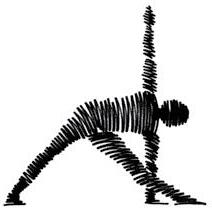
SATURDAY, AUGUST 19
Harmony of Health Conference – 9am-1pm. Part of Ourspace (517) Health and Wellness Weekend. Logan Square Block Party, 4-9pm. Admission free. Logan Square, 3222 S. Martin Luther King Jr Blvd, Lansing. Ourspace517.com.
SATURDAY, AUGUST 26
Wicked Bizarre – 10am-5pm. Halloween/Horror/ Oddities-type of craft and vendor event. Food trucks,
saving scales reptile rescue, charity raffles and more. Over 100 vendors inside and outside. Newburg United Methodist Church, 36500 Ann Arbor Trl, Livonia. MoonlitMystic.com.
Eastside Summer Fest – 11am-10pm. Highlights include 2 stages of live entertainment, activities for kids, a car show, food trucks, vendors and more. Admission free. Frandor Sears parking lot, 3131 E Michigan Ave, Lansing. Tinyurl.com/EastsideSummerFest.
Healing through Connecting Constellations –1-6pm. We are in relationship/connected with everyone and everything. Sometimes our experiences in life have us feeling disconnected from ourselves and others. Healing through Connecting Constellations supports you in reconnecting. $165/14 days advance, $185/ after. Evans Creek Lodge, 24330 Lahser Rd, Southfield. 248-345-3557. Constellation HealingArts.com.
Sound Bath Meditations for One – With Betty Gauthier, owner of Gentle Earth Sound Therapy and Holistic Wellness. $75/60 mins, $110/90 mins. To book a session: GentleEarthSoundTherapy.org.
Science Day Camps – 9am-4pm. L.A.B.S. camps are seasonal day camps during the summer, winter, and spring school breaks. Each day or week of camp is themed and thoughtfully developed for children 5-14. Offer Mini L.A.B.S. workshops, a half-day complement to L.A.B.S. camps, that take place on select Saturdays throughout the school year. Impression 5 Science Center, 200 Museum Dr, Lansing. More info: 517-485-8116 or Impression5.org. River Walk Trash Cleanup – 11am-12pm. 1st day of each month. Join us in caring for the Earth and her waterways by picking up the trash on the Lansing River Trail and the areas around our building. Will meet each month unless it is actively raining or there is snow on the ground. Weavers of the Web, ATC, 809 Center St, Ste 8A, Lansing. 517-657-5800. WeaversOfTheWeb.org.
Journal Circle and September Journal Prompt Reveal – 7-8pm. As we come to the end of summer and start to feel the pull to wind things down, let’s start to feel fall within. Opening grounding visualization ceremony. Discussion around 1-2 of the prompts. Free. Zoom. OptimizeYouMI.com.
Bring Your Best Fest – 9am-9pm. An all-inclusive festival with readers, healers, metaphysical and magic. Free admission. Davison Holistic Therapies, 921 North State Rd, Gathering Room, Davison. Register: Tinyurl.com/yvzenb8v.
East Lansing Farmers Market – Thru Oct. 10am2pm. Valley Court Park, 280 Valley Crt, East Lansing. CityOfEastLansing.com.
Sunday Happy Hour – 4:20-5pm. Receive 20% off the entire order. Edgewood Cannabis, 134 E Edgewood Blvd, Lansing. 517-580-7078. Edgewood Cannabis.com.
Michigan Farmers Market Association Farmers Markets at the Capitol – Thru Sept 19. 9am-2pm. A marketplace to showcase Michigan food and agricultural products. 100 N Capitol Ave, Lansing. 517432-3381. Facebook.com/MIFarmersMarkets/events.
Terpy Tuesdays at The Jade Collection – 9am9pm. Selected for potency, flavor, terpene profile and distinguished genetic heritage. Special deals. 1098 E Main St, Morenci. 517-458-3009. Weedmaps.com/ dispensaries/jade-collection.
Hypnotherapy with Cheryl Beshada, C.M.Ht. –9:30am-7pm, by appt. Also Weds. Cheryl teaches and specializes in personal empowerment, releasing blocks and patterns of negative behavior, higher self-communication. Free consultation. Warren. 586-899-9009.
Downtown Lansing Farmers Market – Thru Sept. 3-7pm. Not held Aug 15, Sept 19. Reutter Park, 400 S Capitol Ave, Lansing. DowntownLansing.org.
Allen Farmers Market – 3-6:30pm. Year-round. Stock up on groceries and visit the Eastside Lansing Food Co-Op onsite at the same time. 1629 E Kalamazoo St, Lansing. Facebook.com/AllenFarmersMarket.
Meridian Farmers Market – Thu Oct. 3-7pm. Marketplace on the Green, 1995 Central Park Dr, Okemos. 517-712-2395. Meridian.mi.us.
Music at the Market – Thru Aug. 6-8:30pm. Entertainers include Garage Sale Band, Global Village, ABC Sisters and the Big Bang Theory Band and Don Middlebrook. Free. Marketplace on the Green, 1995 Central Park Dr, Okemos. 517-712-2395.
thursdays
Stitch In – 5-7pm. Join us with knitting, crochet, spinning, weaving, embroidery, hand sewing, macrame, or whatever else your hands are working on. An inclusive all-ages group, embracing those new to their craft through to life-long practitioners. Woven Art Yarn Shop, 325B Grove St, East Lansing. 517-203-4467. WovenArtShop.com.
Freebie Fridays – 10am-7pm. Spend $100 or more and receive a pre-roll for a penny. Edgewood Cannabis, 134 E Edgewood Blvd, Lansing. 517-5807078. EdgewoodCannabis.com.
Downtown Plymouth Farmers Market – Thru Oct. 8am-12:30pm. Behind Kellogg Park, 736 Penniman, Forest St, Plymouth. Tinyurl.com/3ce337xf.
Meridian Farmers Market – Thu Oct. 8am-2pm. Marketplace on the Green, 1995 Central Park Dr, Okemos. 517-712-2395. Meridian.mi.us.
Online: Self-Love Focused, Live-Chat-Session with Oracle Card Pulls – 9-10am. Set time aside for you to chat with like-minded people and receive messages of inspiration from the divine as well as motivation to move forward from Coach Sherry. Free. TikTok.com/@find_ur_happy.
Certified Hypnotherapists Education and Networking Meeting – 9:30am-12pm. 1st Sat. Certified Hypnotherapists welcome. Includes educational presentation, workbook and digital material. Clinical Hypnosis Professional Group, Warren. Register: 586-899-9009.
GREAT LAKES APPLIED POWER

740 W. Industrial Dr, Chelsea 734-897-0550
GreatLakesAppliedPower.com

We are devoted to third-generation ultra-efficient power solutions using the latest technology and advanced product design. Please contact us for more information or for assistance selecting a Power Cell or Solar Power Wagon to fit your needs! See ad page 5.
THE AHA CENTER FOR AWAKENING HEALTHY AWARENESS
Opal Wong, M.A. Educ. 4111 Okemos Rd., Ste.#102, Okemos


Peak performance through designed movement. Brain Gym equips people—kids, adults and seniors alike—with the designed movement techniques to reach goals they never imagined possible. Opal is available by appoinment only. Appointments can be made in person at her office Tuesday through Thursday, 12-4:30pm.
CLINICAL HYPNOSIS INSTITUTE
Cheryl Beshada, C.M.Ht. 8200 Old Thirteen Mile Rd., Ste 110, Warren 586-899-9009

ClinicalHypnosisInstitute.com
Become a Certified Hypnotherapist. Saturday and Sunday classes begin Sunday, September 24th in-person and/or online. State-licensed School— Ongoing Support. Private Sessions Available.

CHELSEA PLANK FLOORING
740 W. Industrial Dr, Chelsea 734-433-1023
ChelseaPlank.com
Natural. Beautiful. Versatile. Longevity. Green. In simplest terms, a solid plank of hardwood flooring is a piece of a tree. It is neither laminated, extruded, mixed nor reconstructed from industrial regurgitation. It’s the real deal, that which other flooring products strive to resemble and are measured against. See ad on back cover.
OKEMOS FAMILY CHIROPRACTIC
2199 Jolly Rd, Ste 140, Okemos 517-381-1880
OkemosChiro.com
Chiropractic, PEMF, Softwave, Nutrition Response Testing, Qest Biofeedback, Neuropathy, Red Light Trifecta Bed, Superhuman Protocol, Decompression, BrainTap, Normatec Compression and Halo Light therapy. See ad page 9.
WYCOFF WELLNESS
John O. Wycoff, DO

1226 E Michigan Ave, East Lansing 517-333-7270
WycoffWellness.com
We provide customized preventative care and lifestyle improvement plans for all patients. We focus on exploring natural solutions to many health problems or concerns, but do not abandon conventional medicine. We provide a blend of traditional and alternative care to help you achieve health and wellness naturally. See ad page 3 for monthly discounts.
COMPASSION 4 PAWS
VETERINARY HEALING CENTER
517-412-7171
10444 W Grand River Hwy, Grand Ledge Compassion4PawsHealing.com
Offering primary veterinary medicine and urgent care for the routine and urgent needs of your pets! Primary care includes wellness visits for all life stages of your pet. We offer vaccines, preventatives and yearly parasite screening. We help make sure your pet stays healthy with nutritional consultation and assessments. See ad page 29.








